Art Heists – Famous Art Museum Burglaries
When it pertains to cultural history, art heists really have had a significant influence. These stories of the biggest art heists come with an atmosphere of glamor, conjuring images in the mind of the crafty thieves from Hollywood blockbusters. But unlike their fictional equivalents, the largest art heist in history is even more compelling. Today, we shall be answering questions like “Who is the most wanted art thief?”, “What is the most valuable piece of art stolen in the world?”, and “Who robbed the Gardner Museum?”
Table of Contents
- 1 What Is an Art Heist?
- 2 Famous Art Heists
- 2.1 The Mona Lisa Heist (1911)
- 2.2 Oratory of San Lorenzo Heist (1969)
- 2.3 Montreal Museum of Fine Arts Heist (1972)
- 2.4 The IRA Heist (1974)
- 2.5 Mexican Archaeological Museum Heist (1985)
- 2.6 The Isabella Stewart Gardner Heist (1990)
- 2.7 The Moderna Museet Heist (1993)
- 2.8 Schirn Kunsthalle Heist (1994)
- 2.9 The Scream Heists (1994)
- 2.10 Sweden’s National Museum Heist (2000)
- 2.11 The Kunsthistorisches Museum Heist (2003)
- 2.12 The Whitworth Art Gallery Heist (2003)
- 2.13 The Reclining Figure Heist (2005)
- 2.14 Musée d’Art Moderne Heist (2010)
- 2.15 Mohamed Mahmoud Khalil Museum Heist (2010)
- 2.16 The Dresden Art Jewelry Heist (2019)
- 3 Frequently Asked Questions
What Is an Art Heist?
Have you perhaps ever heard of the Boston art museum heist? Were you aware that Leonardo da Vinci’s Mona Lisa (1503) was once stolen? Or what about the time Polish pirates stole The Last Judgment (c. 1466-1473) by Hans Memling and took it back home – the very first documented heist? The picture is now housed at Poland’s National Museum, and the Italians have been trying to retrieve it ever since.
But what exactly is an art heist?
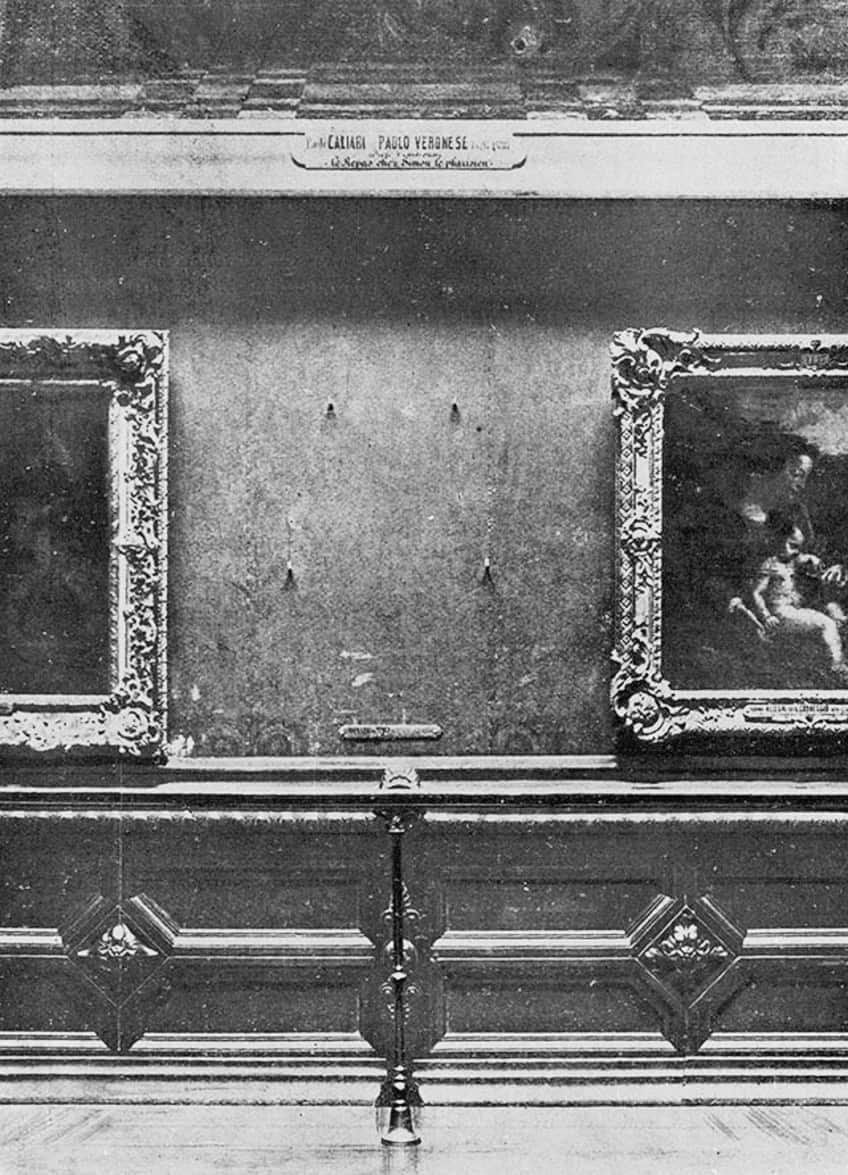
Despite the fact that many priceless art pieces are carefully preserved and placed under heavy security and surveillance, there are still numerous examples of thieves finding ingenious ways of stealing these masterpieces.
“The Last Judgment” robbery is an instance of how a theft may irrevocably alter an artwork’s history—and it is far from the first item in history to have been irreversibly changed in this way.
Although technology has advanced and the methods used to conduct art heists have evolved, robberies of the world’s finest masterpieces continue to occur on a regular basis, thereby adding new and odd episodes to the archives of art history.
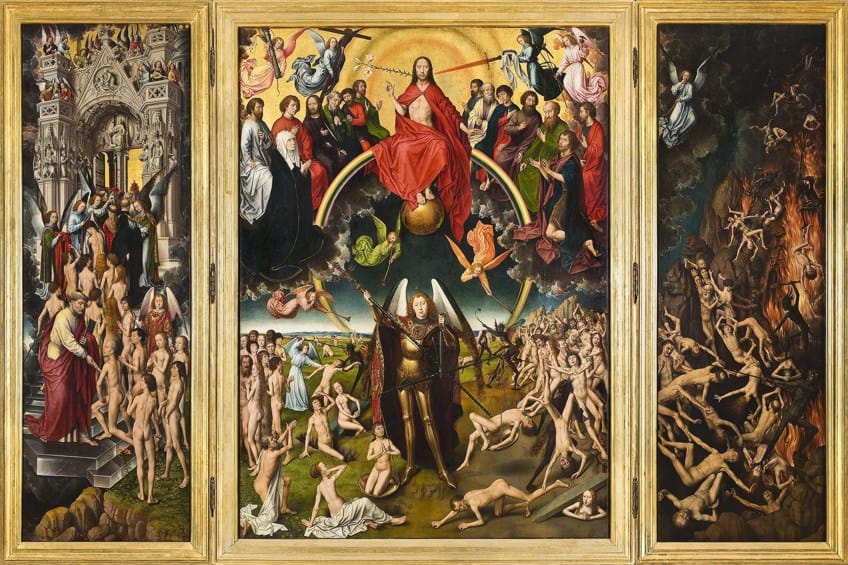
Famous Art Heists
This list will include the largest heist in history as well as the rest of the biggest art heists that still continue to capture the public imagination. They have featured artworks ranging from centuries-old archaeological relics to contemporary masterpieces, as well as a variety of mysterious personalities ranging from novices to security specialists and potentially even organized criminal syndicates.
In some situations, the works were restored, and in others, the works were permanently lost.
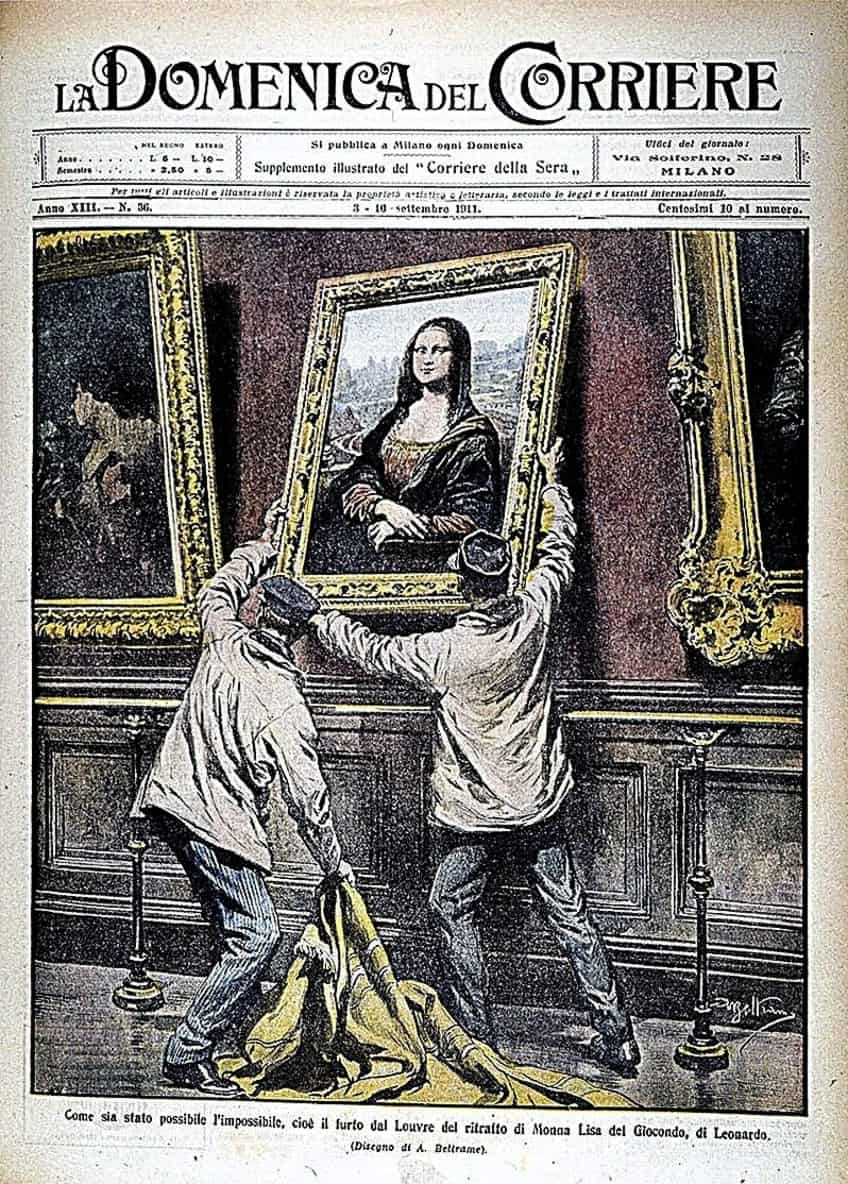
The Mona Lisa Heist (1911)
| Date | 1911 |
| Location | Louvre Museum |
| Value of Heist | Recovered |
| Objects Stolen | The Mona Lisa (1503) by Leonardo da Vinci |
The Mona Lisa by Leonardo da Vinci is perhaps the most famous painting in the world, and one of the explanations for its reputation is an art robbery. Few cared about the picture until 1911, until Vincenzo Peruggia, an Italian carpenter, and two of his colleagues stayed the evening in a cupboard in the Louvre before fleeing with it on a train leaving Paris on that Sunday morning.
The case quickly became one of worldwide interest, and it became impossible to sell the artwork as no one would purchase a piece that was attracting so much publicity.
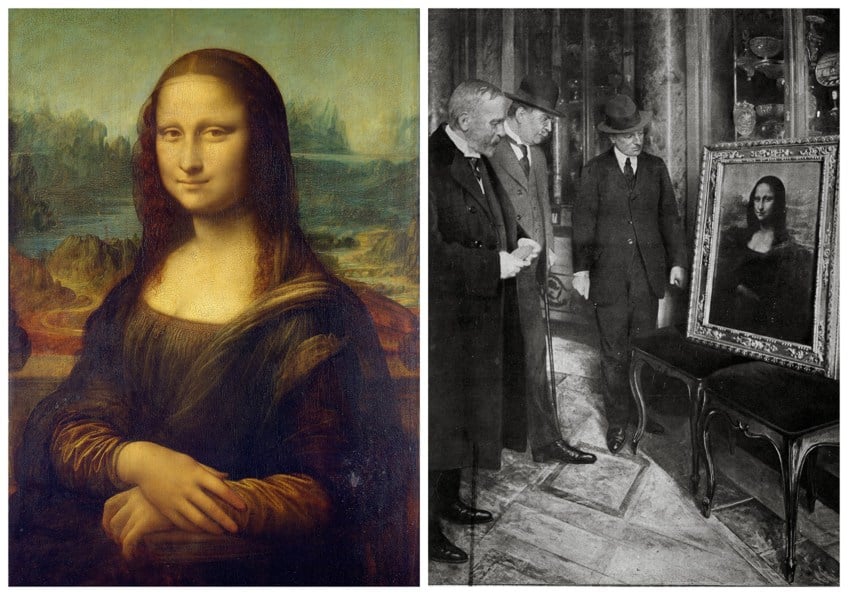
Peruggia then hid it beneath the floors of his Paris flat, only to try to sell it again 28 months later, this occasion to a collector from Florence. Peruggia claimed he was assisting in historical repatriation – he claimed Napoleon had stolen a valuable piece of Italian culture and was resolved to return it to his nation (When Da Vinci died in 1519, King Francis I purchased the picture he was working on in France).
The Florentine trader then called the director of Uffizi Galleries, who grabbed the painting and pretended he was just going to keep it securely. Peruggia was only imprisoned for seven months.
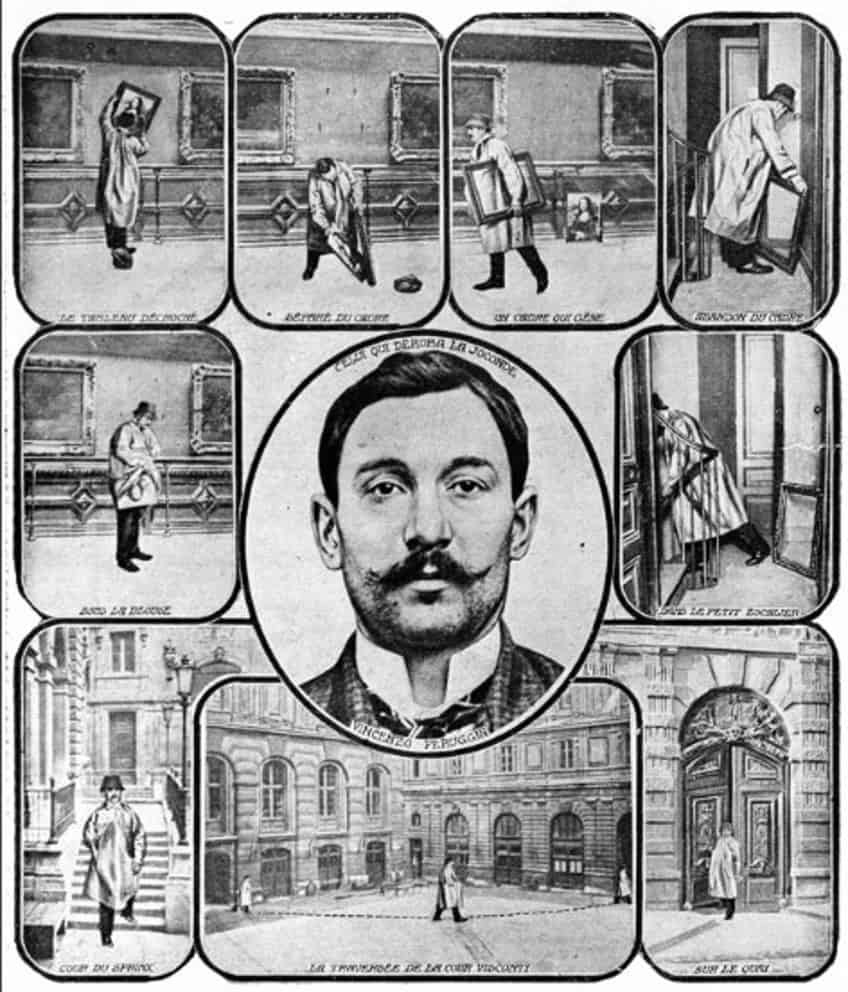
Oratory of San Lorenzo Heist (1969)
| Date | 1969 |
| Location | Oratory of San Lorenzo |
| Value of Heist | Priceless |
| Objects Stolen | Nativity with St. Francis and St. Lawrence (1609) by Caravaggio |
Caravaggio’s Nativity with St. Francis and St. Lawrence (1609), a dramatic picture that previously hung above an altar, was stolen from the Oratory of San Lorenzo in Palermo, Italy, on a rainy evening in 1969. In the years afterward, a slew of ideas regarding what happened to the work has been proposed.
They include the possibility that the Mafia was involved, that it was destroyed, and that rats or pigs ate it.
Experts thought it was forever lost until 2017, when Italy’s anti-Mafia commission revived the investigation with a new clue regarding a now-deceased Swiss art collector, who had urged the thieves to tear up the painting since no one would want to buy such a famous piece.

Montreal Museum of Fine Arts Heist (1972)
| Date | 1972 |
| Location | Montreal Museum of Fine Arts |
| Value of Heist | $20 million |
| Objects Stolen | 39 pieces of jewelry 18 paintings |
Not only is this the biggest art heist in Canadian memory, but it is also one of the world’s most notorious unresolved art thefts. On September 4, 1972, just after midnight, burglars managed to break into the Montreal Museum of Fine Arts by bursting through a skylight in the roof and slipping down a rope.
They then handcuffed and tied the security before fleeing with 39 pieces of jewelry and 18 artworks, including works by Peter Paul Rubens, Eugène Delacroix, and Rembrandt. It had only taken them 30 minutes.
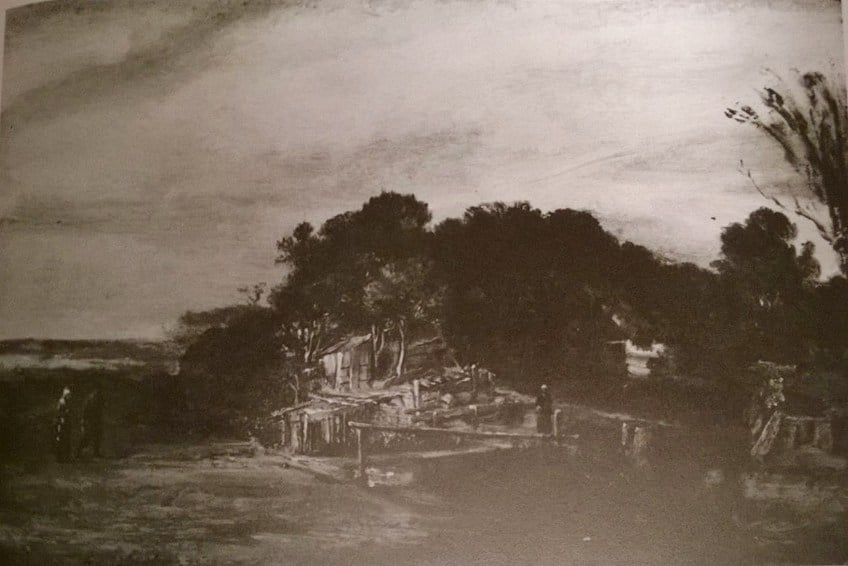
The works were considered to be worth roughly $2 million at the time, but in past few years, the stolen objects have been assessed at around $20 million. After some ransom discussions, a few articles were returned, but the remainder of the stolen stuff was never seen since.
In 2003, a local newspaper speculated that the Montreal mafia was engaged, and experts believe that the majority of the artworks were destroyed because they were too well-known to be resold.
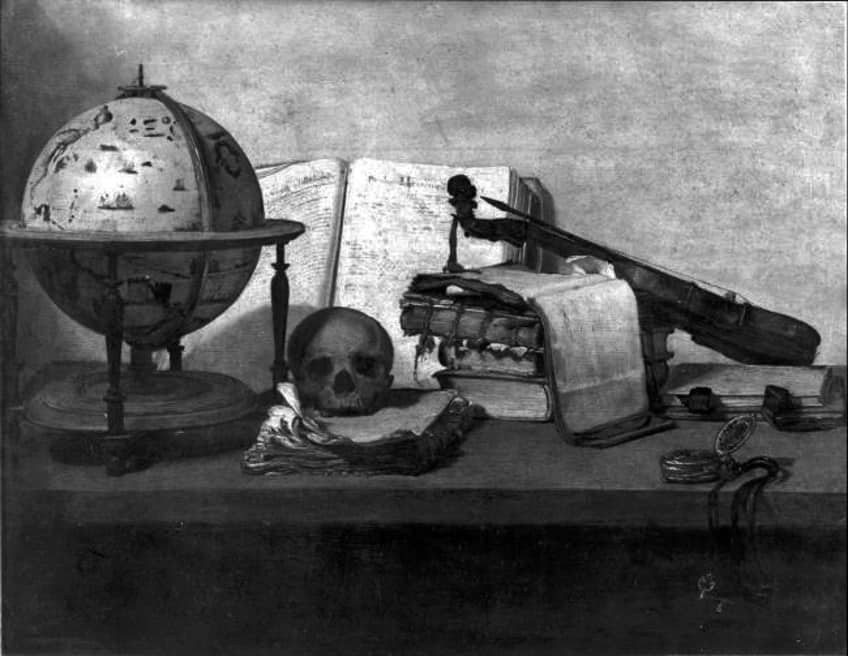
The IRA Heist (1974)
| Date | 1974 |
| Location | Russborough House |
| Value of Heist | $20 million |
| Objects Stolen | Multiple works by masters |
A robbery may sometimes be more than simply a heist; it can also be a political event. That was the case in 1974, when militants of the IRA worked together to plunder Sir Albert Beit, a British politician, at his Irish residence, Russborough House.
They grabbed $20 million of paintings by Francisco Goya, Johannes Vermeer, and Peter Paul Rubens after tying up Beit, which they then held hostage in compensation for the liberation of IRA members convicted for vehicle bombs.
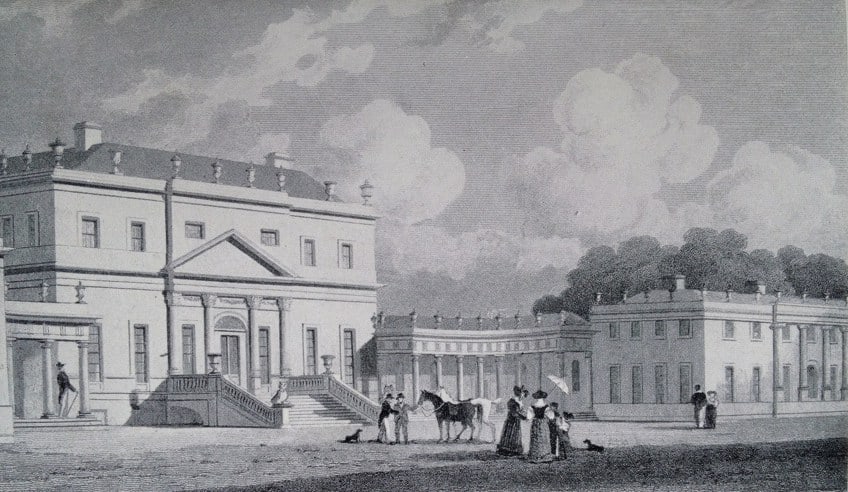
After three artworks were discovered in her home, Bridget Rose Dugdale, the child of a British tycoon, was convicted to nine years in jail. Dugdale said the crime was a demonstration against the British state’s desire “to strip us of our liberty to battle for Ireland and the independence of the Irish nation,” admitting “bold and incorruptible guilt” in court.
In 1986, several of the pieces taken by Dugdale were taken again, this time for less activist purposes.
Mexican Archaeological Museum Heist (1985)
| Date | 1985 |
| Location | Mexican Archaeological Museum Heist |
| Value of Heist | Unknown |
| Objects Stolen | 124 pieces |
As this crime demonstrates, you don’t have to be an expert to pull off a huge theft. Two college failures associated with a drug cartel stole 124 antiquities from Mexico City’s National Museum of Anthropology in 1985, including a magnificent jade death mask depicting a Mayan emperor.
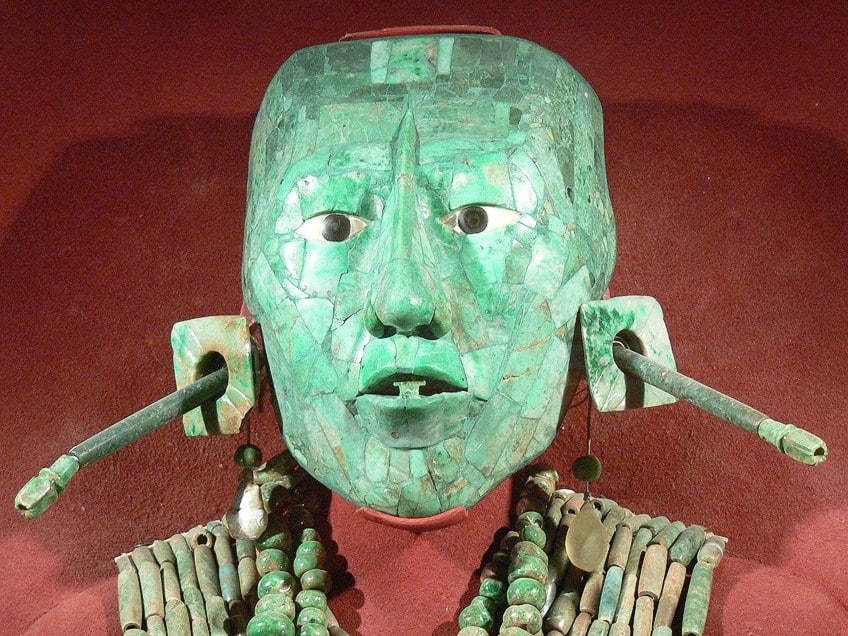
The fact that two novices were able to pull off such a robbery was largely due to their meticulous planning—they canvassed the museum more than 50 times before committing the crime, which entailed crawling down an air conditioning duct. When the two criminals were apprehended, it was revealed that some of the items were almost swapped for cocaine.
Because of the robbers’ lack of experience, the robbery has a unique place in the popular imagination, and “Museo”, a movie, was inspired by the heist and released in 2018.
The Isabella Stewart Gardner Heist (1990)
| Date | 17 March 1990 |
| Location | Isabella Stewart Gardner Museum |
| Value of Heist | $500 million |
| Objects Stolen | 13 artworks |
The largest art heist in history involving paintings was also the costliest. Two individuals impersonating police officers gained access to this prestigious institution, leading to the infamous Boston art museum heist. The criminals quickly tied up the security guards before removing expensive works of art from their frames and loading them into their relatively dingy grey hatchback waiting outside.
Little over an hour later, the burglars fled with 13 artworks worth a whopping $500 million in the vehicle trunk, including paintings by Johannes Vermeer, Rembrandt, Édouard Manet, and Edgar Degas.

This heist was particularly responsible for the loss of the most valuable piece of stolen art, The Concert (1664) by Johannes Vermeer. Because there is so much mystery surrounding the case, many people are still fascinated by it, with some speculating that the mafia was complicit, that the security was associated, or that the masterpieces were truly destroyed. Officials of the museum are still unclear about the pieces’ location.
“I hope I could somehow console myself in believing they’re someplace, but I’m not sure if they still survive,” the curator remarked in 2020. It is still unknown who robbed the Gardner Museum.
The Moderna Museet Heist (1993)
| Date | 1993 |
| Location | The Moderna Museet |
| Value of Heist | $30 million |
| Objects Stolen | Multiple works by masters |
Three men stole paintings by Georges Braque and Pablo Picasso from the Moderna Museet in Stockholm in 1993, making it Sweden’s greatest art robbery. They were eventually found, and three persons were charged with stealing them. Seven years later, at the National Museum in Stockholm, robbers armed with submachine guns used a complicated array of diversions to get into the museum.
They ended up stealing three masterpieces by Pierre-Auguste Renoir and Rembrandt and made their getaway safely.
The paintings, estimated at $30 million, were suspected to be on their way out of Eastern Europe, so police launched a concerted campaign to stop any sale. In 2001, there was a shock: one of the Renoirs was discovered while police were conducting an unrelated cocaine operation.
International officials caught crooks trying to sell the Rembrandt for $42 million in 2005 while pursuing a Bulgarian gang and recovered that piece as well. While attempting to complete the transaction, four people were detained.
Schirn Kunsthalle Heist (1994)
| Date | 1994 |
| Location | Schirn Kunsthalle |
| Value of Heist | $35 million |
| Objects Stolen | Nebelschwaden (1820) by Caspar David Friedrich Schatten und Dunkelheit (1843) by J. M. W. Turner |
Insurance, which is never a pleasant subject when it comes to museums, was crucial in the aftermath of a robbery at Frankfurt’s Schirn Kunsthalle in 1994. Thieves chained and blindfolded two security personnel before stealing a couple of J. M. W. Turner artworks borrowed from the Tate as well as a Caspar David Friedrich artwork, borrowed from the Kunsthalle Hamburg.
Despite the fact that two criminals and a dealer were apprehended shortly after the robbery, the hunt for the missing artworks took more than 10 years.

Investigators reported in 2000 that the Turners were being kept captive by a Serbian mafia. The Tate then disclosed in 2002 that it had covertly rescued the Turners—and pocketed £38 million in the process owing to an insurance ploy. However, the Kunsthalle Hamburg reclaimed their Friedrich in 2003, thanks to a lawyer who worked with the burglars.
In the end, three individuals were convicted of stealing the Turners, but two men who provided the burglars with the museum keys were exonerated.
The Scream Heists (1994)
| Date | 1994 and 2004 |
| Location | National Museum, Oslo |
| Value of Heist | Recovered |
| Objects Stolen | The Scream (1893) by Edvard Munch |
The Scream, one of the most renowned pieces of art in history, was produced by Edvard Munch in 1893 and has been looted twice in the previous two decades. On the very first day of the Winter Olympics, one version was stolen from Oslo’s National Gallery.
After a protracted sting operation including both the British authorities and the Getty Museum, it was retrieved in May 1996, resulting in the arrest of four persons.
This includes the famed art thief Paal Enger, who was condemned to six and a half years in jail but escaped in 1999, only to be apprehended a few days later dressed in a wig and black glasses on the way to Copenhagen. A separate rendition of The Scream was taken from the Munch Museum in Oslo in 2004. While people were admiring the numerous artworks, the masked robbers held security at gunpoint, snatched the painting, and then fled in a nearby automobile.
A number of persons were arrested and prosecuted for the crime, but the picture remained undiscovered until 2006 when it was discovered by authorities.
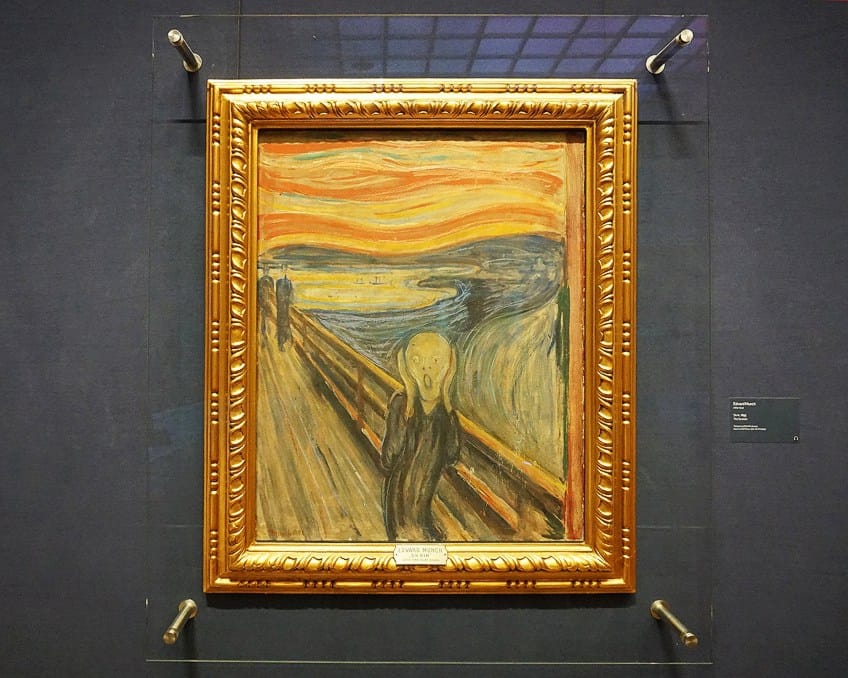
Sweden’s National Museum Heist (2000)
| Date | 2000 |
| Location | Sweden National Museum |
| Value of Heist | $45 million |
| Objects Stolen | Conversation (1879) by Pierre-Auguste Renoir Young Parisian (1874) by Pierre-Auguste Renoir Self Portrait (1630) by Rembrandt |
This sensational robbery occurred in December 2000 and might have easily been the premise of a spy movie. A team of robbers armed with submachine guns raided Sweden’s National Museum, kidnapped security officers, and seized a Rembrandt and two Renoir artworks for $45 million. The group then fled aboard a motorboat docked in the river near the museum.
Just before the theft, police got reports of two automobiles on fire nearby, which were believed to be a distraction put up by the robbers, who reportedly threw nails in front of the gallery to further impede the police.
The police obtained a ransom threat from a lawyer working on behalf of the criminals in 2001, but they declined to pay, and the instigators of the plot, as well as numerous other collaborators, were captured shortly after. Several months later, during another police case, the police recovered one of the Renoir works by mistake.
The Kunsthistorisches Museum Heist (2003)
| Date | 2003 |
| Location | The Kunsthistorisches Museum |
| Value of Heist | $60 million |
| Objects Stolen | The Saliera (1543) by Benvenuto Cellini |
The only work credited to Renaissance artist Benvenuto Cellini is the Saliera, a golden sculpture depicting Land and Sea ruling over their wealth. This made it all the more tragic when the sculpture was stolen from its exhibit at the Kunsthistorisches Museum in Vienna in 2003.
The theft then triggered an alert, which a guard mistook for an accident.

The theft of the $60 million sculpture was described as a “disaster” by Wilfried Seipel, the museum’s director. Robert Mang, a security professional who focused on alarm systems, was discovered to be the thief in 2006, following two attempts to obtain a $12 million extortion for the piece.
He was convicted to four years in prison after leading authorities to a woodland outside of Vienna, where he had concealed the artwork in a metal container.
The Whitworth Art Gallery Heist (2003)
| Date | 2003 |
| Location | Whitworth Art Gallery |
| Value of Heist | Recovered |
| Objects Stolen | The Fortifications of Paris with Houses (1887) by Vincent van Gogh Tahitian Landscape (1891) by Paul Gauguin Poverty (1928) by Pablo Picasso |
On April 23, 2003, Manchester’s Whitworth Art Gallery realized that three of its iconic artworks by Pablo Picasso, Vincent Van Gogh, and Paul Gauguin had gone lost. The robbery, worth an estimated $8 million, was called “the Loo-vre” in the media because of the fact that the stolen artworks were discovered mere days later in a nearby public bathroom. The artworks were discovered coiled up in a wet large cardboard box in a nook of the wet, graffiti-adorned structure. It was accompanied by a message from the burglars that stated, “We did not want to take these artworks, only to show the poor security.”
The artworks had minor damage but were quickly restored to the museum walls. The thieves were never apprehended.
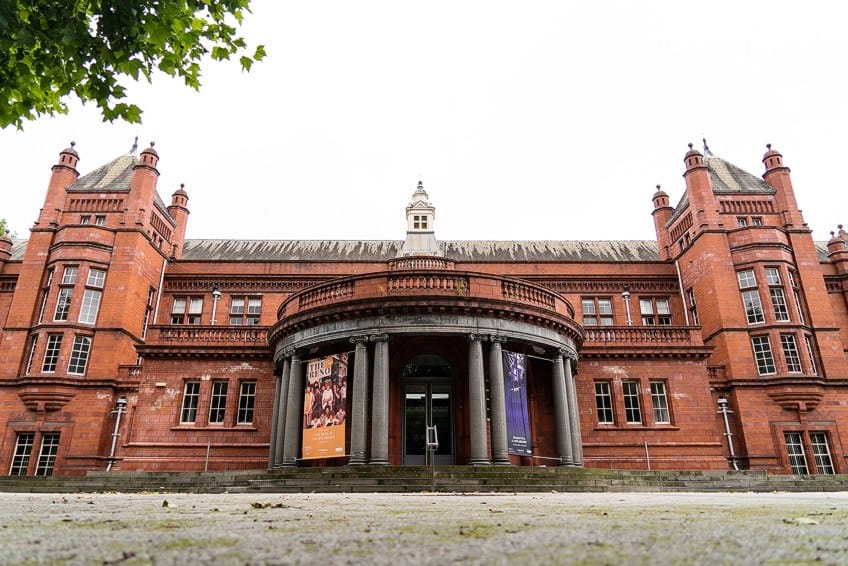
The Reclining Figure Heist (2005)
| Date | 2005 |
| Location | Hertfordshire, England |
| Value of Heist | $18 million |
| Objects Stolen | Reclining Figure (1969) by Henry Moore |
Tons of bronze were converted into amorphous shapes that took on human-like aspects in Henry Moore’s colossal sculptures. As a consequence, one artwork, titled Reclining Figure (1969), became a prominent target for thieves wanting to profit from a flourishing scrap metal market fueled by surging Chinese demand. The $18-million external monument, which weighed a stunning two tons and was on display at the creator’s foundation in Hertfordshire, was stolen in 2005.
Given the work’s weight and size, police have been perplexed for years as to why criminals removed it and where it may have ended up.
After a series of inquiries at nearby scrapyards, British police announced in 2009 that they suspected the sculpture was no longer in existence, reasoning that criminals had hacked it apart in the night, melting it down and selling the converted bronze for £1,500.
“In my opinion, we’ve done everything we can to put the mystery to rest,” John Humphries told the Associated Press. The persons accused of destroying Moore’s work were never apprehended.
Musée d’Art Moderne Heist (2010)
| Date | 2010 |
| Location | Musée d’Art Moderne |
| Value of Heist | $100 million |
| Objects Stolen | Multiple pieces |
When the press gives you a moniker, you know you’re making it as a thief. “Spider-Man” was a suitable title for Vjeran Tomic, a superb climber, and burglar who spent his boyhood in Père Lachaise climbing cemetery walls with his companions in anticipation of robbing apartment buildings. Tomic’s first robbery occurred when he was ten years old when he stole into a bookstore in Mostar by scaling through a window approximately ten feet above surface level and grabbing two several hundred-year-old volumes.
He pulled off the largest art robbery of his generation at the age of 49.
Tomic’s spiritual connection to beautiful art drove him to commit the crime in 2010 when he went insane and stole a Picasso, a Léger, a Matisse, and a Modigliani from the Musée d’Art Moderne. Tomic started working on a gallery window on the 14th of May, using a black sheet of fabric as a curtain, a process that took six nights to complete—why rush, right?
Then, on May 20th, he went inside the museum early in the morning, leaving momentarily to test whether the alarms would go off (alarms that had been pending to be serviced for several weeks at the time), and then returning. He had intended to steal only one artwork but ended up taking five paintings for more than €100 million.
Tomic was apprehended in May 2011 and sentenced to eight years in prison. The artworks, on the other hand, are still gone and are believed to have been obliterated.
Mohamed Mahmoud Khalil Museum Heist (2010)
| Date | 2010 |
| Location | Mohamed Mahmoud Khalil Museum |
| Value of Heist | $50 million |
| Objects Stolen | Poppy Flowers (1887) by Vincent van Gogh |
Poppy Flowers (1887) should not have been so simple to take. On the day it was removed from its frame and taken out of the museum, there were just nine guests. The reason the burglars were so effective was simple: the artwork’s alarm didn’t operate, nor did any of the other sensors on any of the museum’s masterpieces. The theft started producing havoc in Egypt after the cultural minister reversed a claim that the piece had been discovered in a Cairo airport. Eleven cultural ministry employees resigned, and three museum security were jailed.
The picture, estimated to be worth around $50 million, is still missing as of 2021.
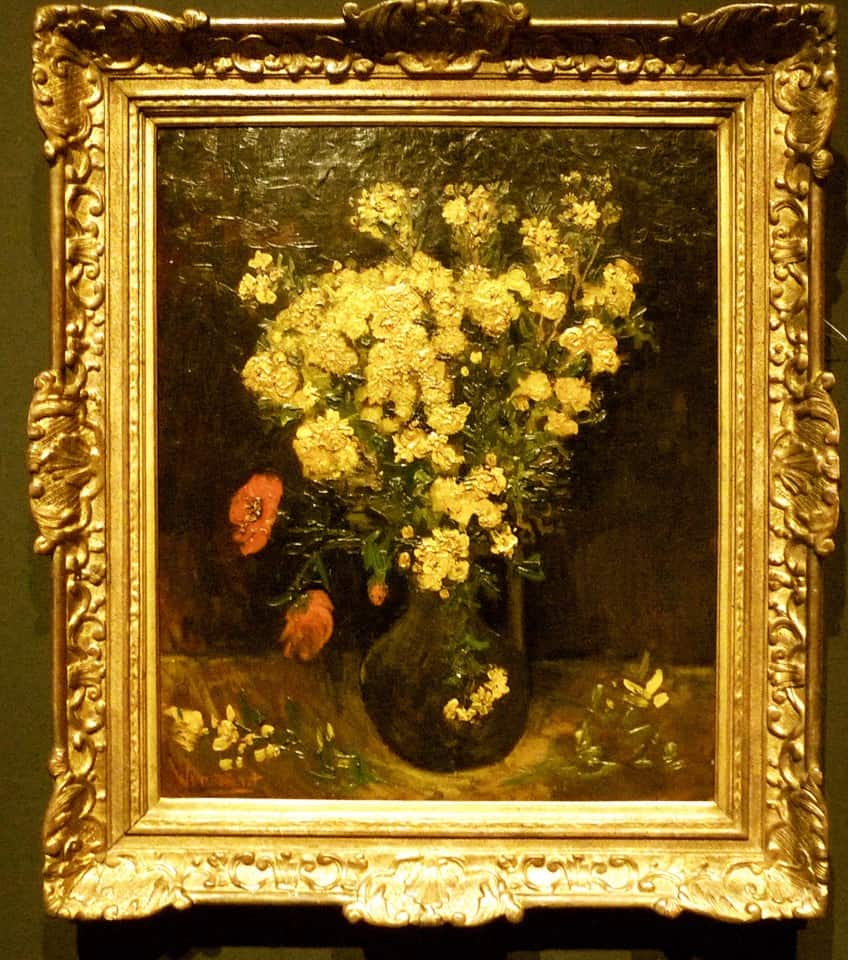
The Dresden Art Jewelry Heist (2019)
| Date | 2019 |
| Location | Green Vault Museum, Dresden |
| Value of Heist | $1.2 billion |
| Objects Stolen | Multiple pieces |
The Dresden jewels heist, probably the largest art heist in history, was mostly completed in less than a minute. By battering an ax into a glass case robbers cut the electricity at the Green Vault Museum and made off with treasures appraised at $1.2 billion.
Some of the earth’s most famous jewelry artifacts, including a sword adorned with 800 diamonds and the Dresden White Diamond, were taken.
By the end of 2020, four people had been detained for the crime, but German authorities were still looking for the gems, which had not been found by the start of 2021. One security group said in January of that year that crooks were attempting to sell the diamonds on the dark web.
Today, we discovered the largest art heist in history as well as the other biggest art heists that rocked the art world. The thieved works of art are frequently well-known masterpieces by great artists. This makes it harder to locate them after the heist because everyone would identify them. Even the once-powerful illegal market has lost interest. The artworks are occasionally used as ransom, but this is rarely effective. This results in the loss of priceless treasures, but an even larger loss for the art world.
Frequently Asked Questions
Who Robbed the Gardner Museum?
Two individuals disguised as cops entered the Museum of Science in Boston. They duct-taped their captives to piping and a bench in the museum basement after overpowering two unsuspecting night security officers. The couple then proceeded to take 13 priceless works of art from the ornately adorned exhibition, destroying the protective glass on two Rembrandt works and ripping the canvases from their golden frames. The robbers made off with a spectacular collection of art estimated at $500 million just over an hour later. Many people are still interested in the story since there is so much uncertainty surrounding it, with some assuming that the mafia was involved, that security was involved, or that the masterpieces were genuinely destroyed. It remains a mystery who stole them.
Who Is the Most-Wanted Art Thief?
Stéphane Breitweiser is a well-known French art thief and novelist who is known for his heists. While traveling across Europe and working as a server, he admits to taking 239 paintings and other displays from 172 museums. He is unlike most other art robbers in that he did not remove them for financial gain. He was a self-described art aficionado who stole to amass a sizable personal collection of masterworks from the 16th and 17th centuries. Despite the vastness of his assortment, he was able to recollect each and every item he had stolen. Several times throughout his trial, he halted the long reading of his collections to rectify various details.
Isabella studied at the University of Cape Town in South Africa and graduated with a Bachelor of Arts majoring in English Literature & Language and Psychology. Throughout her undergraduate years, she took Art History as an additional subject and absolutely loved it. Building on from her art history knowledge that began in high school, art has always been a particular area of fascination for her. From learning about artworks previously unknown to her, or sharpening her existing understanding of specific works, the ability to continue learning within this interesting sphere excites her greatly.
Her focal points of interest in art history encompass profiling specific artists and art movements, as it is these areas where she is able to really dig deep into the rich narrative of the art world. Additionally, she particularly enjoys exploring the different artistic styles of the 20th century, as well as the important impact that female artists have had on the development of art history.
Learn more about Isabella Meyer and the Art in Context Team.
Cite this Article
Isabella, Meyer, “Art Heists – Famous Art Museum Burglaries.” Art in Context. July 1, 2022. URL: https://artincontext.org/art-heists/
Meyer, I. (2022, 1 July). Art Heists – Famous Art Museum Burglaries. Art in Context. https://artincontext.org/art-heists/
Meyer, Isabella. “Art Heists – Famous Art Museum Burglaries.” Art in Context, July 1, 2022. https://artincontext.org/art-heists/.











